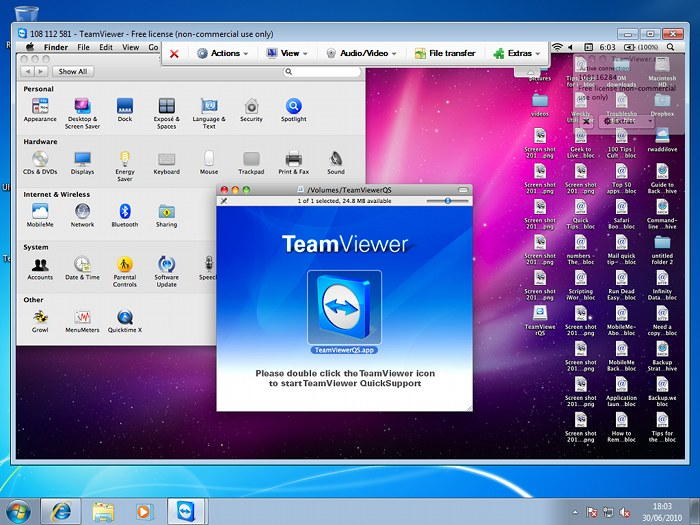When it comes to options for establishing a Mac remote desktop connection, Mac users have two choices: using Apple software or third party software, such as TeamViewer. There are two Mac options: the Apple Remote Desktop that comes at a cost, or the free screen sharing solution that requires forwarding ports and a VNC to be set up in order to.
If you have a network environment with both Windows and Mac OS X, there will be times you need to connect to the Mac from Windows.
Note: In this example, I’m connecting a Windows 7 system to my Mac running OS X Lion over my home network.
Remote Access a Mac from Windows
First, download and install the most recent stable version of the free utility TightVNC to your Windows computer.
During installation, uncheck TightVNC Server, unless you’re going to use it for other remote access situations. For connecting your Windows system to a Mac, the server isn’t required.
On your Mac, click the Apple icon and select System Preferences.
System Preferences opens. Click Sharing under Internet & Wireless.
Now, in the Sharing window check Screen Sharing. Then click the Computer Settings button. Note the IP address is shown above the Computer Settings button. You’ll need it to connect with TightVNC.
Next, check VNC Viewers Macy Control Screen with Password. Type in a password and click OK.
Then type in the password for your Mac system and click OK.
Go back to your Windows computer and click Start > All Programs > TightVNC > TightVNC Viewer.
Enter in the IP address for the Mac computer. The IP address is displayed on the Screen Sharing window on the Mac. Click Connect.
Next type in the password you created for the VNC connection earlier. This is NOT your Mac system password.
Wait a few seconds for the connection to be established. Tight VNC brings up the remote connection screen. Select the user account you want to use to log in on your Mac.
Mac Screenshot Keyboard Shortcut


Enter the user account password.
There you go! You can control your Mac remotely from your Windows PC just as if you were sitting in front of it. I have my Mac set to a large display resolution, so the first thing I did is turn it down to 1024×768.
This setting is up to you. You can run it at full resolution if your Windows display is capable.
In fact, TightVNC provides several cool options you can explore to get the remote session to work how you like.
If you use the remote connection a lot, create a shortcut on your desktop. On the TightVNC toolbar, click the Save icon.
Then give the connection shortcut a name, save to desktop and click Save.
Next, it asks if you want to save the password. If you’re the only user on the Windows PC, it’s easier to save it, but again it’s up to you.
The TightVNC remote connection to your Mac icon displays on your desktop. Just double click it anytime you want to connect remotely to your Mac. Simple and nice!
There’s a bit of lag time while controlling your Mac from Windows via TightVNC, based on your network speed or over a WiFi connection. Your mileage will vary. Overall, though, this is an easy and efficient way to remotely control your Mac from your Windows system on the same network.